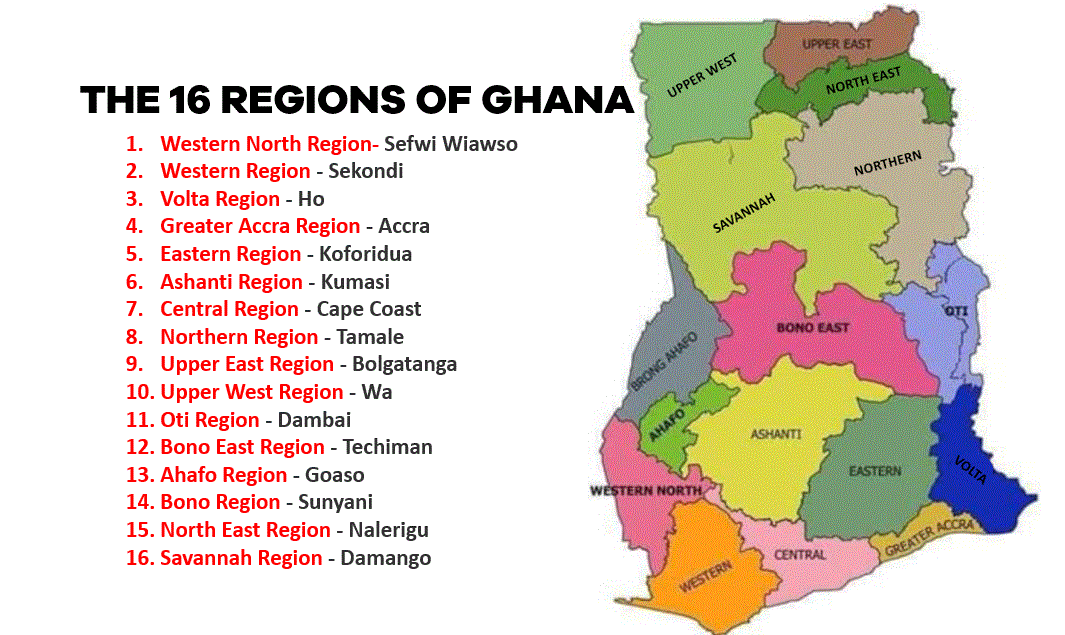All you need to know about the 16 administrative regions of Ghana
Did you know Ghana has 16 Regions? A Quick History
Until 2018, Ghana operated with 10 administrative regions. Following a historic national conversation and the 2018 Ghanaian New Regions Referendum (held on December 27th), six new regions were officially added, bringing the total number of administrative regions in Ghana to 16. This expansion was a major constitutional milestone and fundamentally reshaped the landscape of governance and development in the country.
Why were six new regions created in Ghana?
The creation of six new regions was driven by decades of persistent petitions from local communities who felt their areas were too geographically distant from the existing regional capitals. For instance, the demand for the Oti Region (previously part of the Volta Region) dates back as far as 1954.
The primary motivations for the reorganisation were:
Effective Administration: The existing 10 regions were considered too vast to be managed effectively by a single central authority, leading to slower administrative processes in remote areas.
Decentralization and Development: The goal was to bring governance closer to the people, ensuring that development, resources, and infrastructure were directed more efficiently to specific geographical areas.
Political Fulfillment: The idea of creating new regions became a campaign promise of President Nana Addo Dankwa Akufo-Addo in 2016, a promise that was successfully fulfilled to grant these communities their own distinct administrative identities.
How were the new Ghana regions created? (Which regions were split?)
The creation of the six new regions was achieved by splitting four of the existing administrative regions through a democratic referendum process.
The regions that were split to create the new six regions were:
- Western Region was split into two to create Western and Western North;
- Northern Region was split into two to create North East and Savannah;
What is the advantage of having 16 regions in Ghana?
The reorganization to 16 regions is a vital step toward a more responsive and inclusive national framework. The new structure is designed to benefit both citizens and visitors by:
Meeting Changing Needs: Allowing administrative areas to better meet the dynamic requirements of their growing and diverse populations.
Protecting Interests: Helping to protect minority ethnic or group interests and foster greater cohesion across different communities.
Targeted Infrastructure: Ensuring that resource allocation and development initiatives are directed exactly where they are needed most.
In short, the 16 regions are empowering local areas to meet the needs of an ever-changing Ghana, especially with the growing influx of diaspora members who are settling, setting up businesses, and driving new growth.
Ready to Explore Ghana? Discover the 16 Regions!
Ghana is a nation of incredible diversity, history, and unique travel experiences. Now that you know the background of the 16 regions, it’s time to start planning your adventure!
Click on any of the 16 regions below to explore the best attractions, cultural events, travel guides, and unique things to do on your next trip with viewGhana:
Discover some things to experience within the 16 regions of Ghana
Find out more about specific sites and locations in Ghana
Boti Falls
Boti Falls, Boti, Eastern Region, Koforidua, Ghana
Boti falls is a twin waterfall located at Boti in Manya Krobo in the Eastern…
Mole National Park
Mole National Park, off the Damongo-Sawla road, Northen Region, Larabanga, Ghana
If you want to experience the savannah of Ghana with safari with all its wildlife…
Larabanga Mosque
Larabanga Mosque, Sawla-Damongo Rd, Northern Region, Sawla, Ghana
The Larabanga Mosque is shrouded in many stories and legends. As the legend goes, Ayuba,…
Bia National Park
Bia National Park, Adwuofua, Western North Region, Adwuofua, Ghana
The Bia National Park covers a total area of 305.62km² and is located in the…











